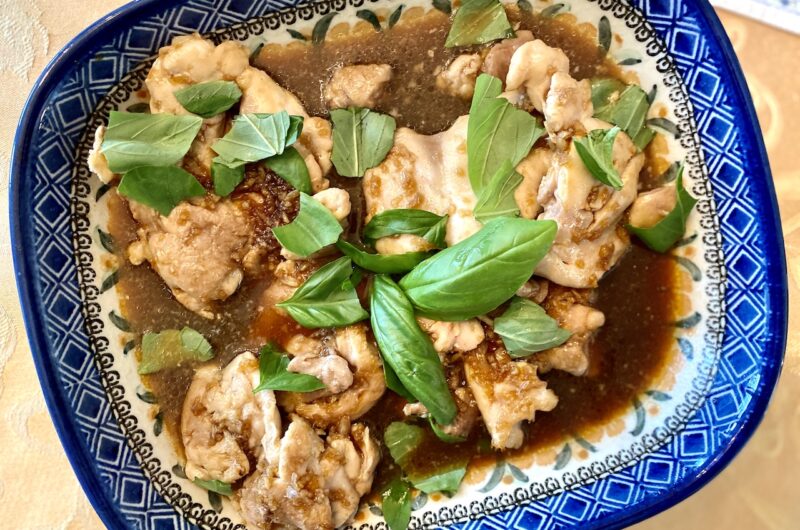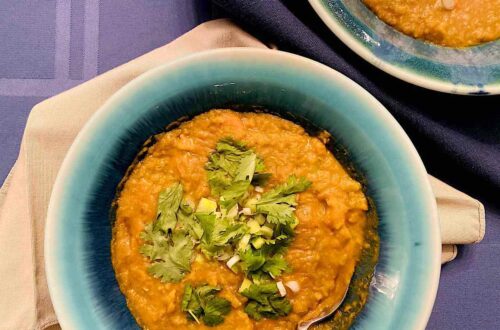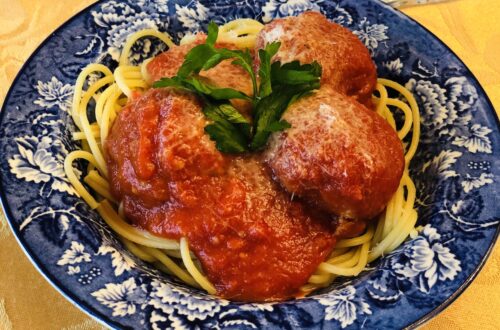
Sweet and Spicy Chicken
I take no credit for this recipe – I straight up stole it from my father. He found it (in this blog, which really deserves all the credit), he made it, and he made it again (and again) when we kept asking for it. (Also: how did my father end up on a food blog??). It’s everything I want from a simple chicken dish: sweet and spicy, bright and tasty, with a little bit of sauce that tastes great on everything (rice, potatoes, the salad next to the chicken on the plate). To be fair, the sugar that goes into the sauce may have something to do with how good it is. It also helps that the chicken is tenderized by being beaten with a mallet (or an ice cream scoop or a rolling pin). In these pandemic times when we are all still stuck at home, pounding chicken breasts is also a great way to let out some pent-up frustration. (But be careful – I was a bit too enthusiastic and chipped a plate).
I wanted to use this recipe now because I think it’s important to talk about labor conditions in the meatpacking industry during this pandemic. The media has covered the issue pretty well, but it’s still worth emphasizing the risks inherent in working in these plants – both during the pandemic and before.
US meatpacking is a gigantic industry, producing 105 billion pounds of poultry, beef, pork, and lamb per year. As workers at meat plants – most of whom are immigrants and people of color – continue to work in order to provide meat for the country, we need to discuss the risks they face simply by showing up for their jobs. According to the Midwest Center for Investigative Reporting, as of May 20, 15,300 Covid-19 cases have been linked to 192 meat and poultry processing plants and 63 workers have died. Currently, half of all meatpacking plants are in counties with high rates of Covid-19 infections.
Of course, dangerous labor conditions at meat packing plants are nothing new. Meat packing plants have high rates of occupational injuries and illnesses – higher, in fact, than the rates in sawmills and in oil and gas well-drilling. In recent years plants have reported gruesome deaths from machines and chemicals – about 8 workers have died each year while working in meat packing plants. Workers complain that they are forced to work quickly, often doing the same repetitive motion, leading to high rates of carpal tunnel syndrome. Workers also say that they are often not permitted to take their mandated bathroom breaks; as a result, they often try to drink less water during their shifts or even wear diapers to avoid needing to use the bathroom.
Covid-19 has exacerbated the situation. While cutting up meat carcasses, workers generally stand within a foot or two of each other, making it impossible for them to socially distance. Workers also often breathe heavily while working, since they are doing strenuous activity – carrying and cutting up carcasses. Moreover, inadequate sick-leave policies mean that workers try to go to work at whatever cost – even with Covid-like symptoms.
The corporations that own and run these plants – mainly Tyson, JBS, and Smithfield – did not respond especially quickly to the pandemic. It took weeks for Tyson to provide workers with masks – in one plant workers claimed they didn’t receive PPE until April 23. (By then, there had been 5,000 cases at meat packing plants around the country.) Workers also allege that processing plants tried to suppress information about deaths from Covid-19 and about employees who tested positive.
More recently, companies have implemented better policies. Plants now generally provide masks and check workers’ temperatures; some have built plastic separators between workers; and some space out break and lunch times. Still, some workers say they don’t feel safe and wonder if Covid is still spreading where they work.
As this blog continues I will discuss factory farming and its resulting environmental harms. But for now, I think it’s important to acknowledge and to fight for people who are being forced to make impossible decisions (to work in unsafe conditions or not to get paid) in jobs that are dangerous – and that pay far from enough even in the best of times.
Sweet and Spicy Chicken
Course: Dinner, Recipe4
servings30
minutesAdapted from Baked Sweet and Spicy Chicken from Creme de la Crumb.
Ingredients
2-3 tablespoons olive oil
4 boneless skinless chicken breasts or thighs, pounded to even thickness
Salt and pepper to taste
1/2 cup brown sugar
1-2 tablespoons Tabasco sauce (or another hot sauce, adjusted to taste)
2 teaspoons minced garlic
1 teaspoon salt
1 tablespoon apple cider vinegar
1/3 cup water
Directions
- Preheat the oven to 400º F (200º C). Oil a Pyrex pan or baking sheet.
- Whisk together the brown sugar, hot sauce, garlic, salt, apple cider vinegar, and water. Pour the mixture into a small sauce pan and bring the mixture to a boil over medium heat. Let it boil for 3-4 minutes. It should all mix together and the brown sugar should dissolve.
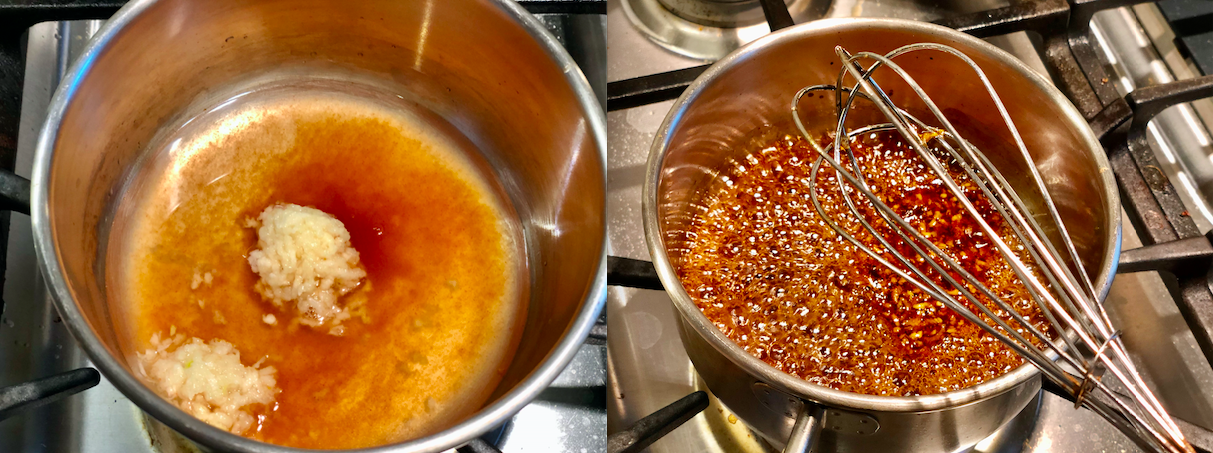
- Using a meat mallet (or an ice cream scoop, rolling pin, or wine bottle), hammer the chicken to tenderize it. It should flatten out, to about ¼ inch thickness. (Beware: this can be a bit messy, since the chicken juice can splatter. You can put saran wrap over the chicken to avoid splattering.)
- Season both sides of the chicken breasts with salt and pepper.
- Add 1-2 tablespoons of olive oil to a skillet and heat over medium heat. When the skillet is hot, cook the chicken breasts 1-2 minutes on each side until they are browned. Because they are thin, they will cook quickly.

- Once the chicken breasts have been browned on both sides, remove them from the skillet and place them the Pyrex pan, making sure that they are in a single layer.
- Brush each piece of chicken with the sauce. Flip the pieces over and make sure to brush both sides. There will be sauce left over – keep it for serving.
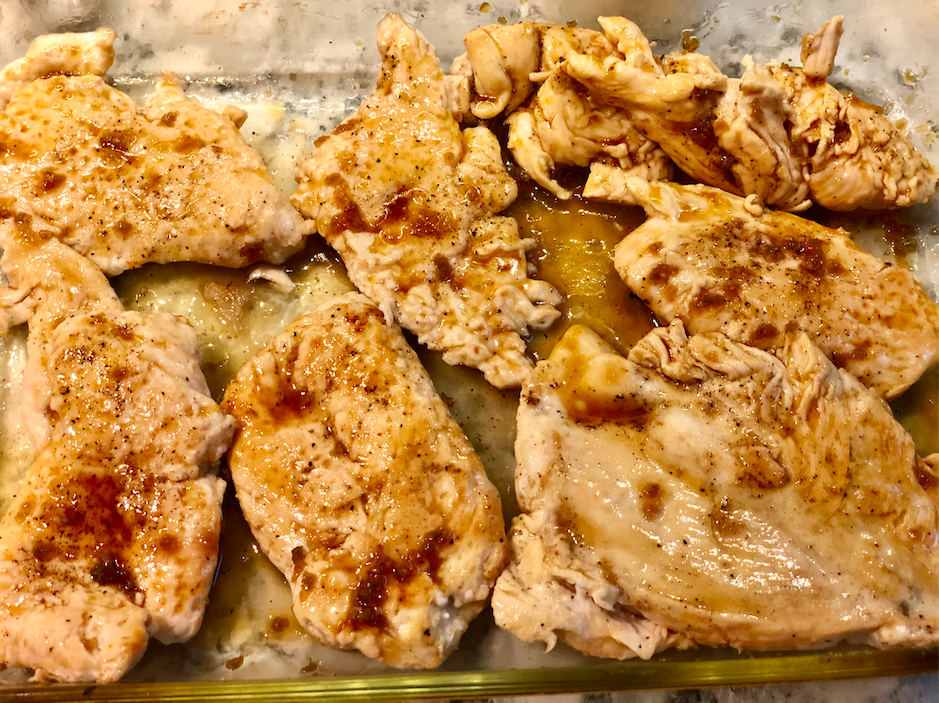
- Bake the chicken for about 10 minutes. Depending on how thick the chicken is and how long you brown it, it will need more or less time.
- When the chicken is cooked through, take it out of the oven and pour the sauce over it (either in the baking sheet or on a serving plate).
- Serve with rice or potatoes, salad or peas, or anything else.
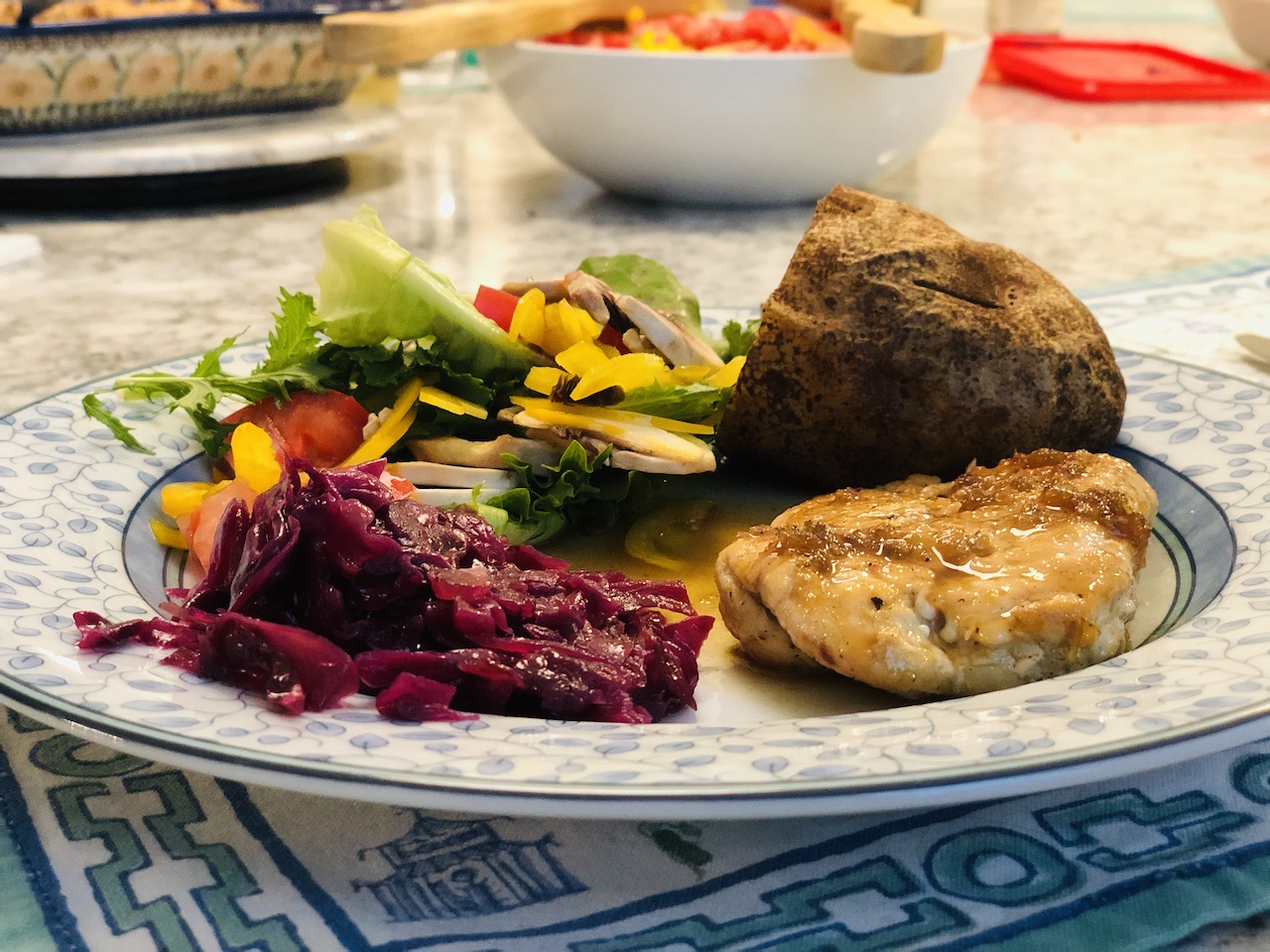
Notes
- I use Tabasco sauce as the hot sauce in this recipe, but you could probably use any hot sauce. Just adjust the amount that you use in order to have the right amount of spice. You may need more with other hot sauces.

